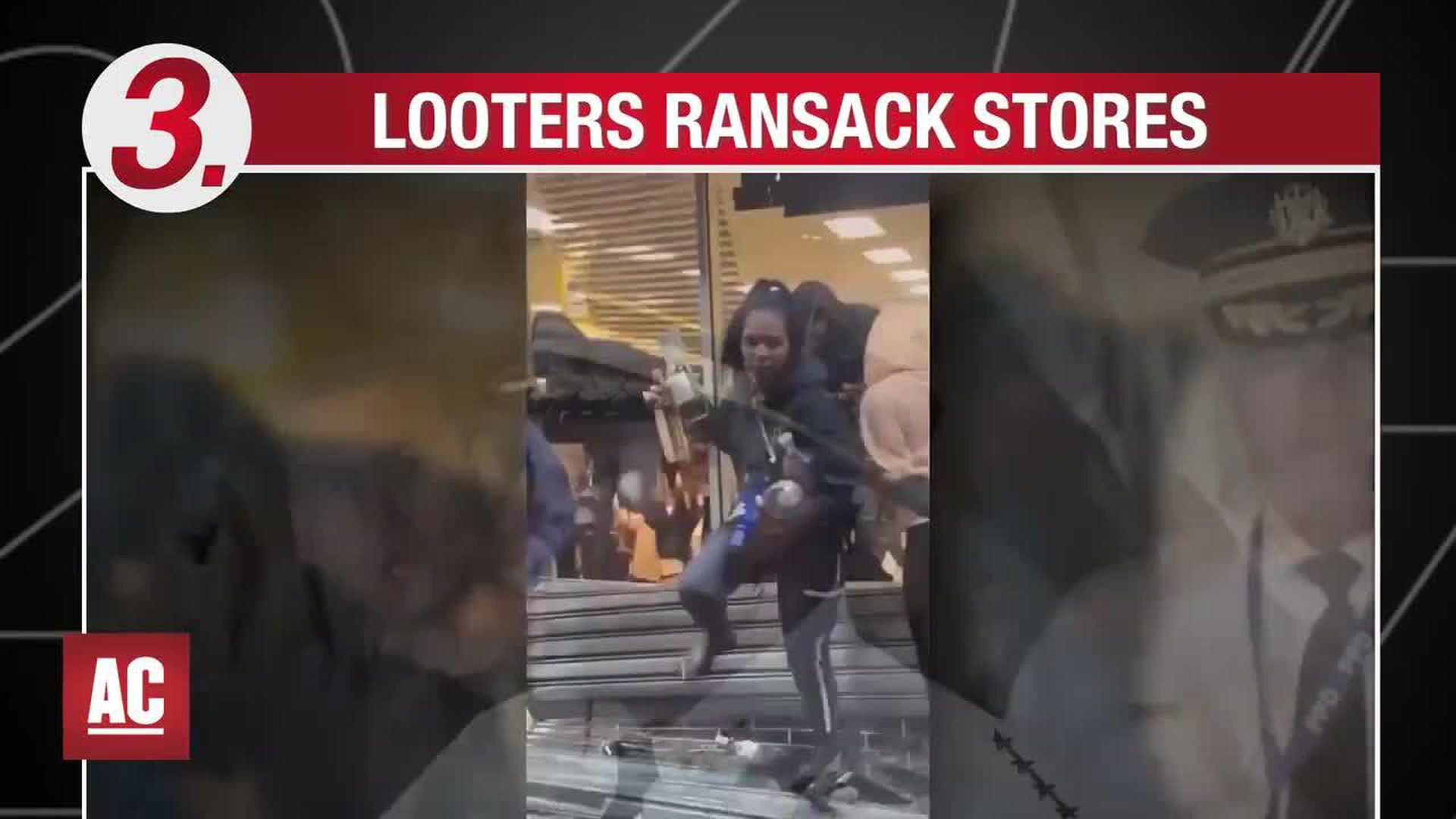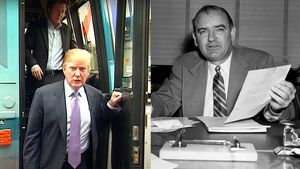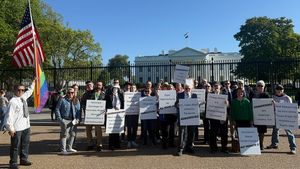New York (CNN) — “Shoplifting in Great Department Stores.” “The Shoplifting Profession.” “No Mercy to Shoplifters.”
These headlines could be from articles today. But they’re from the early 1900s.
While shoplifting has seemingly never been a bigger problem than it is now, shoplifting has long captured the public’s attention. Anxiety over shoplifting is an enduring phenomenon and is often a stand-in for larger concerns of cultural, economic or political changes.
“The figure of a shoplifter may provide for a scapegoat for deeper problems that are more complex and intractable,” James Walsh, who directs the University of Ontario Institute of Technology’s graduate program on criminology and justice, told CNN. “It resonates with broader concerns about law and disorder.”
In 19th century Victorian Britain, hysteria focused on middle-class women, who were accessing public spaces for the first time. Some were stealing for the thrill. These fears of women stealing continued in America as department stores opened. During the counterculture movement of the 1960s and 1970s, public focus was on teens and college students defying authority by stealing from stores.
“Historically, shoplifting has always had this outsized impact on public discourse,” said Alex Vitale, a professor of sociology at Brooklyn College and the author of “The End of Policing.”
Today, toothpaste and deodorant are locked up at stores. Videos of thieves smashing store windows and grabbing merchandise have rocketed across the news and social media. Companies are calling theft a national crisis. Leaders in both political parties and law enforcement officials have advocated tougher penalties. Donald Trump, the former president and front-runner for the 2024 GOP presidential nomination, has gone as far as calling for shoplifters to be shot.
Although shoplifting increased in some cities during the first half of the year compared to pre-pandemic levels, there is no clear national rise in shoplifting, according to a new analysis by the Council on Criminal Justice, a nonpartisan criminal justice policy organization.
“We see examples on video of behaving badly and it gets invested with all this extra meaning about the collapse of social order,” Vitale said.
Shoplifting has also become a politically charged crime that many on the right and some Democrats have exploited to oppose criminal justice policy reforms.
Those reforms had gained bipartisan support in both red and blue states and were meant to roll back decades of mass incarceration policies, which hit Black and brown communities hardest.Many political leaders, retailers and law enforcement officials now want to mobilize a stronger response to crack down on theft and other crime.
“The concern over shoplifting taps into a larger narrative about how urban areas are out of control,” said Michael Flamm, a historian at Ohio Wesleyan University and the author of “Law and Order: Street Crime, Civil Unrest, and the Crisis of Liberalism in the 1960s.”
Shoplifting reports in 24 major cities where police have consistently published years of data — including New York City, Los Angeles, Dallas and San Francisco — were 16 percent higher during the first half of 2023 compared to 2019, according to the Council on Criminal Justice analysis.
However, excluding New York City, the number of incidents among the remaining cities was 7 percent lower.
“The overall data doesn’t indicate a great shift in the average shoplifting event, but the brazen ransacking incidents, coordinated on social media and captured on video, clearly suggest that there is a sense of lawlessness afoot,” said Adam Gelb, the CEO of the Council on Criminal Justice.
Changing role of women
Shoplifting has been part of retail since the beginning of self-service stores.
Middle-class women shoplifting in Victorian Britain during the 1800s were the focus of an early panic over shoplifting.Incidents of well-to-do Victorian women stealing from department stores were covered extensively in newspapers, journals and plays and came as women ventured outside the home for the first time, disrupting the male-dominated social order.
Doctors diagnosed these women with kleptomania, or thieving madness. It was a stereotype believed to be a condition of bored and sexually repressed women.
“There was a hysterical fear that there was a growing contagion of middle-class women losing moral virtue. The hysteria was much greater than the actual fact,” said Tammy Whitlock, a historian of gender and women’s studies at the University of Kentucky and author of “Crime, Gender and Consumer Culture in Nineteenth-Century England.” “Upper-and middle-class women were the paragons of society. What upset people the most is these were supposed to be women of virtue.”
Attention on kleptomania took off in America as department stores expanded in the late 1800s. “Said They Couldn’t Help It: Women Arrested for Shoplifting Believed to Be Kleptomaniacs,” a New York Times headline from 1889 read.
“The dangerous ones are the rich and influential women who either yield to a temporary impulse of temptation or are afflicted with a sort of degenerate tendency toward kleptomania,” a store detective told the Times in 1908.
Counterculture fears
During the 1960s, public focus shifted to teenagers and college students stealing.
Images and descriptions of young people shoplifting tapped into fears about the counterculture movement and cultural decline— that students lacked respect for the flag, country, universities or any type of authority.
“In the 1960s, there was more of a political and cultural element to shoplifting,” said Michael Flamm from Ohio Wesleyan. “There was a much wider articulation that shoplifting was a critique of the capitalist system.”
Vietnam War protester Abbie Hoffman’s 1971 “Steal This Book” furthered the image of hippies as thieves who wanted to bring down America. “Shoplifting tied into a wider sense that respect for authority was diminishing. It was a stand-in for larger concerns and anxieties,” Flamm said.
“There seems to be a complete contempt for adult authority among many youths,” one mayor said in 1963 of his city’s shoplifting problem.
“Ripping off—stealing, to the uninitiated — is rapidly becoming as much a part of the counterculture as drugs and rock music,” the Times wrote in 1971. “Middle‐class youngsters who 5 or 10 years ago would have been working their way up the corporate ladder can now be found stuffing their pockets in supermarkets, shoplifting in department stores.”
Like today, shoplifting during this era was wrapped into broader concerns that cities were out of control and crime would spread to the suburbs.
Shoplifting and scenes of looting sparked fears of a breakdown in law and order. Political leaders, particularly on the right, began to seize on crime as a potent issue to win voters and advance stricter criminal policies as the answer.
Republican presidential nominee Barry Goldwater introduced “law and order” messaging to voters in 1964, and these issues helped elevate Richard Nixon to the presidency in 1968.
Law-and-order response
Behind the current uproar over shoplifting and retail crime, which have been escalated by the presence of social media, are worries that physical stores are at risk of disappearing — the “retail apocalypse” — cities are in disarray and public spaces are dangerous.
Amazon and online shopping have forced thousands of brick-and-mortar retailers to close. The pandemic in 2020 also helped tip chains like JC Penney into bankruptcy.
Since stores reopened from the pandemic, businesses have been sounding the alarm about a rise in theft, particularly from organized groups stealing merchandise. Some companies say they are closing over shoplifting.
“Retailers are seeing unprecedented levels of theft coupled with rampant crime in their stores, and the situation is only becoming more dire,” David Johnston head of asset protection and retail operations at the National Retail Federation, said in September.
Retailers report that merchandise losses, known as shrink, increased 19 percent in 2022 to $112 billion. External theft accounted for an average of 36 percent of losses, although retailers say the dollar losses are likely underreported. (Shrink also includes employee theft, damaged products, administrative errors, vendor fraud and other factors.)
Retailers also say organized retail crime — the large-scale theft of merchandise with the intent to resell the stolen items — and violence of organized groups are a growing threat to stores and employees.
Mentions of “organized retail crime” on companies’ earnings calls increased 43 percent from January through August of this year compared to 2022, the Chamber of Commerce found.
However, the overwhelming majority of shoplifting incidents involve one or two people, not groups. More than 95 percent of shoplifting incidents in 2019, 2020, and 2021 involved one or two people, and 0.1 percent involved more than six people, according to a Council on Criminal Justice analysis of shoplifting reports. Shoplifting incidents involving an assault or other crime constitutes less than 2 percent of shoplifting incidents, the analysis found.
Retailers and political leaders are advocating for police and incarceration as a solution.
Retailers have called for local and state government to more aggressively prosecute organized retail crime, lower the dollar thresholds for theft to rise to a felony, and reverse policies to eliminate cash bail. According to the Chamber of Commerce, 12 states have recently created new statutes, revised existing statutes, or enhanced penalties for organized retail crime and other shoplifting offenses.
But tougher criminal policies may not deter crime.
Laws and policies designed to deter crime by focusing mainly on increasing the severity of punishments are ineffective, according to the Department of Justice. “Research shows clearly that the chance of being caught is a vastly more effective deterrent than even draconian punishment.” Additionally, there is no evidence linking bail reform to increases in crime.
“If punishment was the key to public safety, we’d be the safest country in the world,” said Jeffrey Butts, the director of the Research and Evaluation Center at John Jay College of Criminal Justice. “You get more public safety by working on underlying problems.”
The-CNN-Wire
™ & © 2023 Cable News Network, Inc., a Warner Bros. Discovery Company. All rights reserved.

Video Source: Advocate Channel
- Logan Paul’s Energy Drink PRIME Faces Investigation For 'Serious Health Concern' ›
- What Is the 'One Chip Challenge'? Teen's Death Forces Company to Pull Product ›
- Victoria’s Secret Launches Apparel For Women With Disabilities ›
- Anna 'Delvey' Sorokin to Star in New Reality Series While Under House Arrest ›


















































